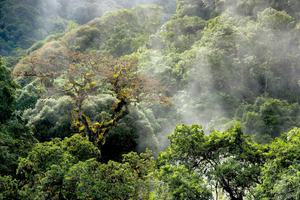The Guliya Glacier in western China. The Byrd Polar and Climate Research Center at The Ohio State University
Scientists have unearthed the remnants of more than 1,700 viruses from deep inside a glacier in western China. Most of these viruses are new to science.
With this discovery, the number of ancient viruses recovered from glaciers has grown fiftyfold. The viruses, gathered from a 1,000-foot ice core taken from the sprawling Guliya Glacier on the Tibetan Plateau, date back 41,000 years and span three major shifts from cold to warm.
Scientists say the viruses differed markedly between colder and warmer eras, noting that a distinct community of viruses formed during the most dramatic of these climatic shifts, at the end of the last ice age some 11,500 years ago. “This at least indicates the potential connection between viruses and climate change,” said ZhiPing Zhong of Ohio State University, lead author on the research.
Scientists posit that warming eliminated some resident viruses and that changing winds brought in new viruses from as far away as the Arctic and the Middle East. Glacial viruses likely infected other microbes, sending ripples up the food chain. Researchers say that viruses recovered from glaciers could shed light on how life evolved through past changes in climate and help clarify, for instance, whether ancient forests or wetlands were carbon sinks or sources. Their findings were published in Nature Geoscience.
While researchers have warned that some dormant viruses now being liberated from melting glaciers could potentially infect humans, the viruses unearthed from the Guliya glacier pose no risk, study authors said. They emphasized the need to gather more such viruses before glaciers melt away. Said Zhong, “Glacial ice is so precious, and we often don’t have the large amounts of material required for virus and microbe research.”



